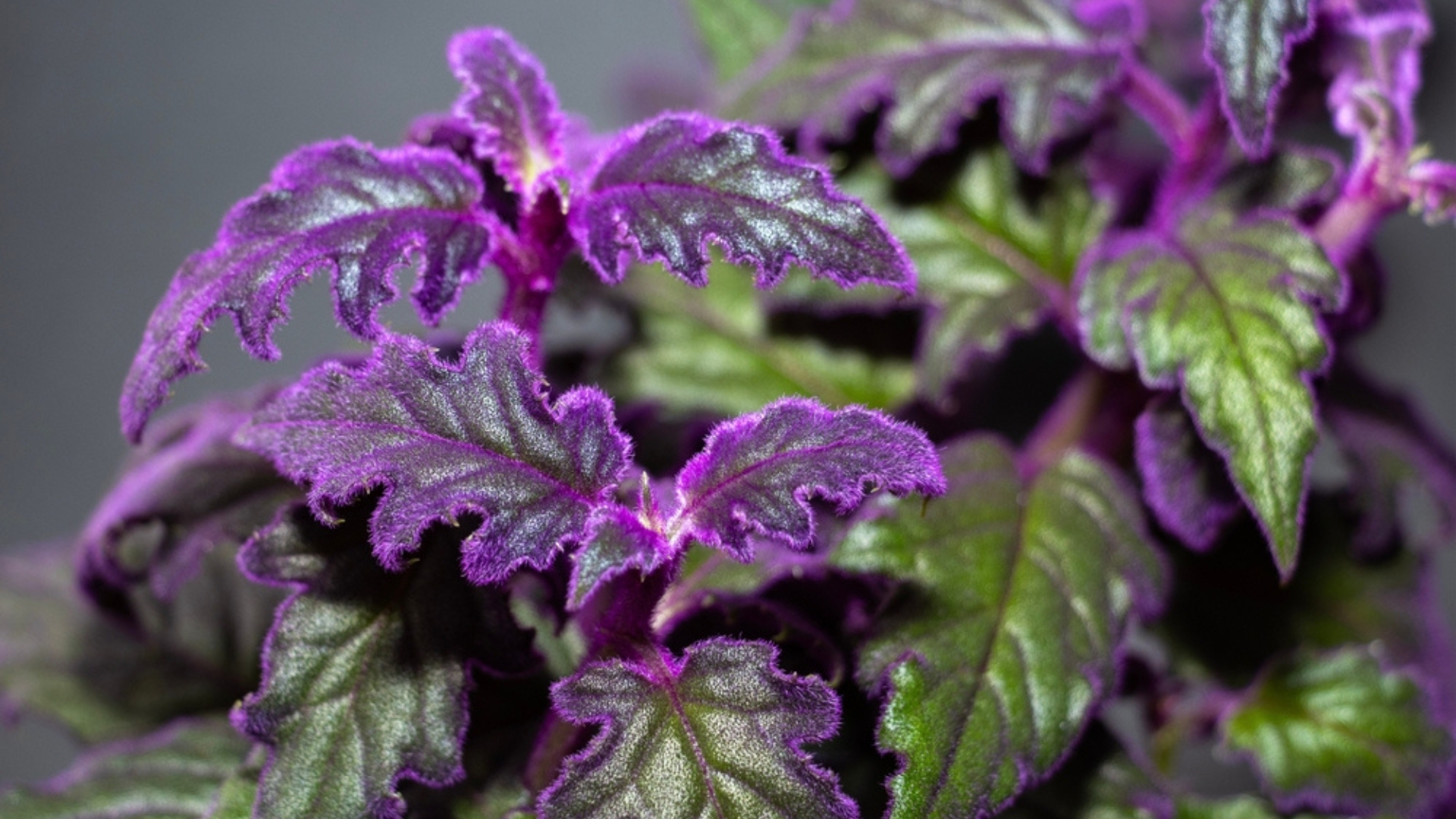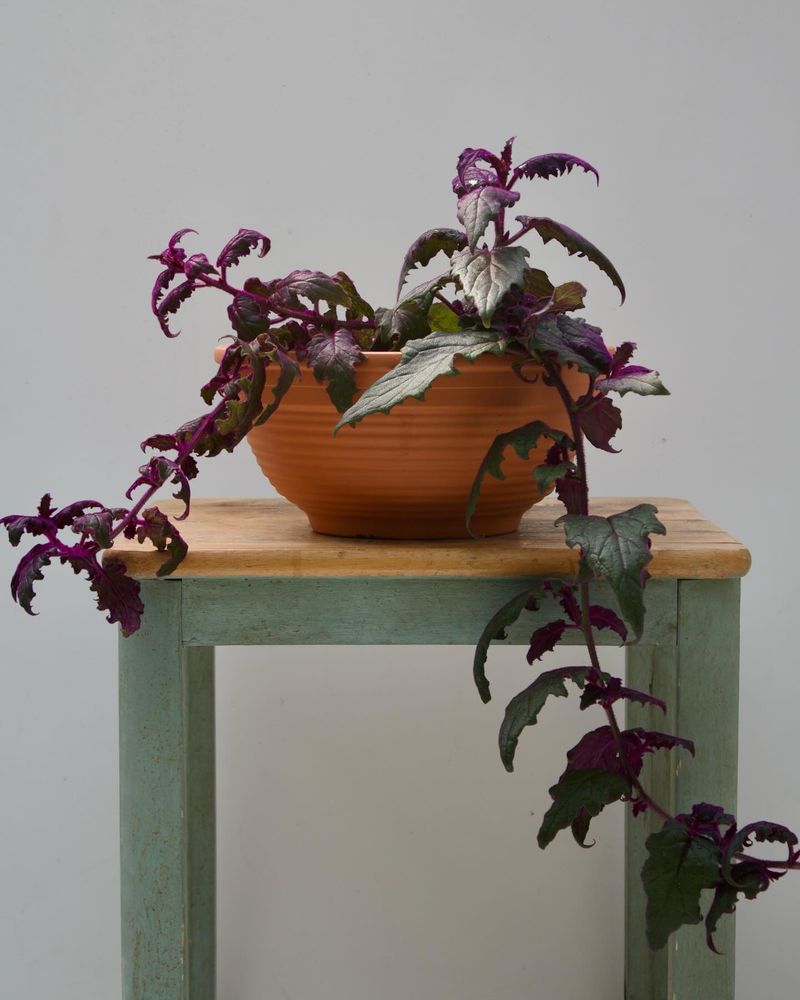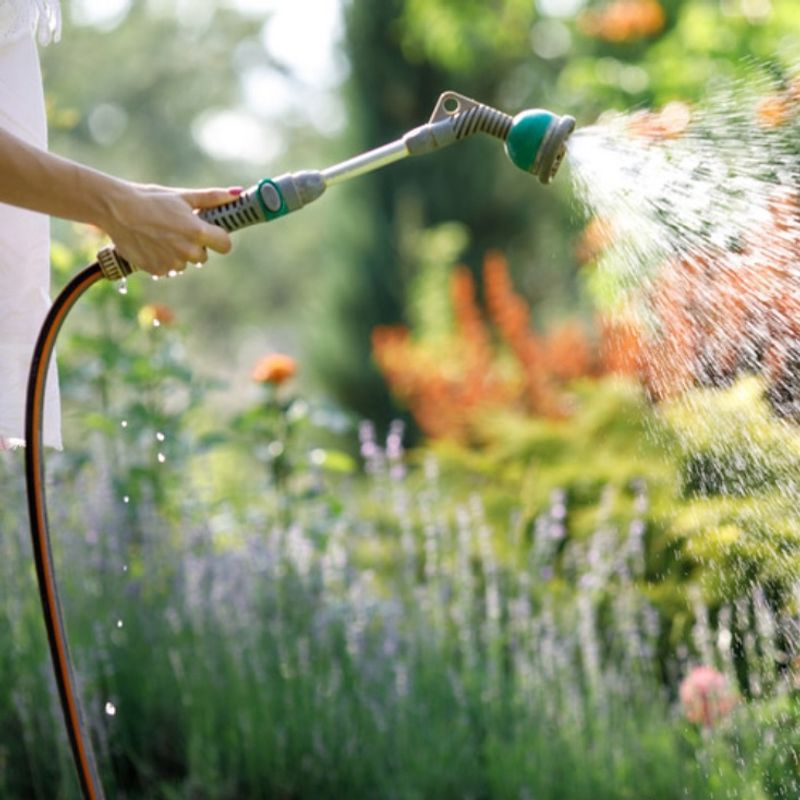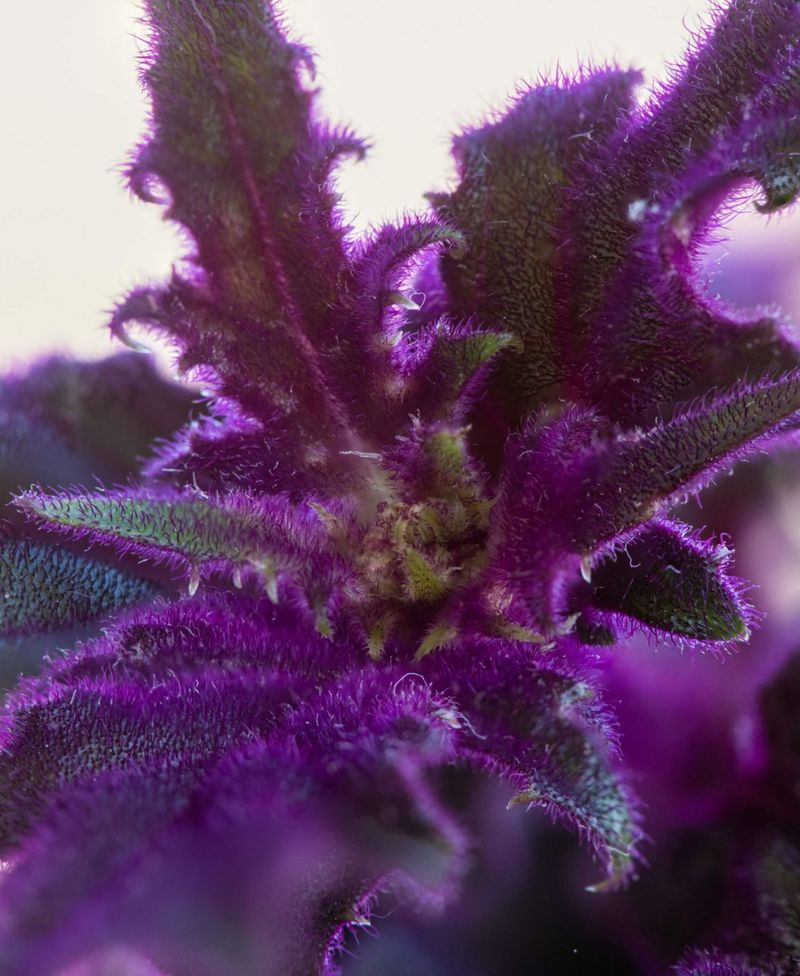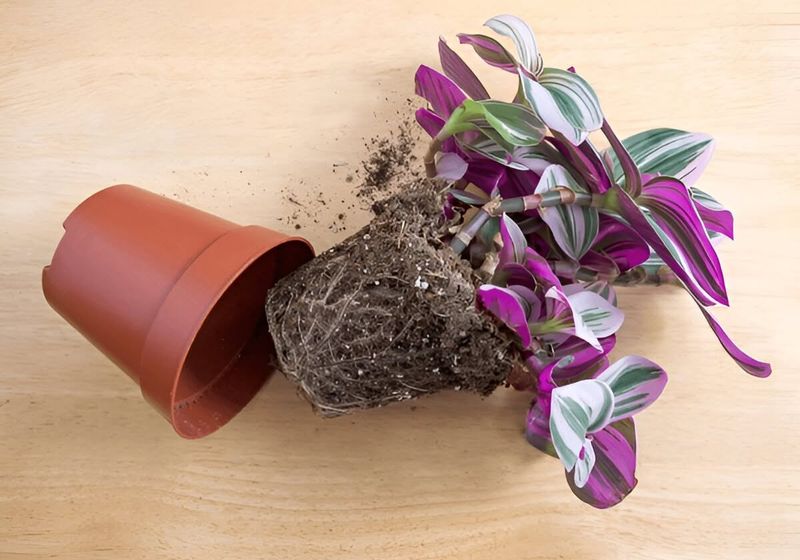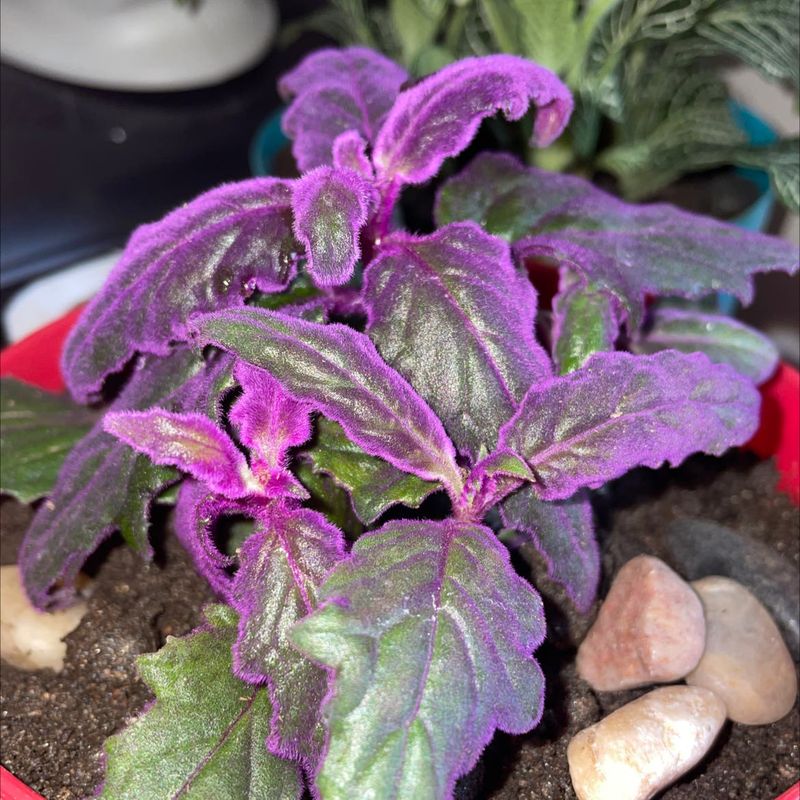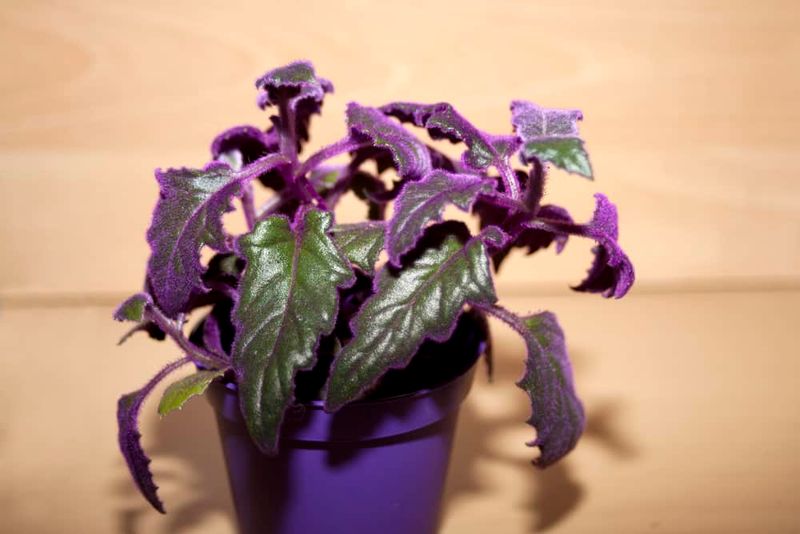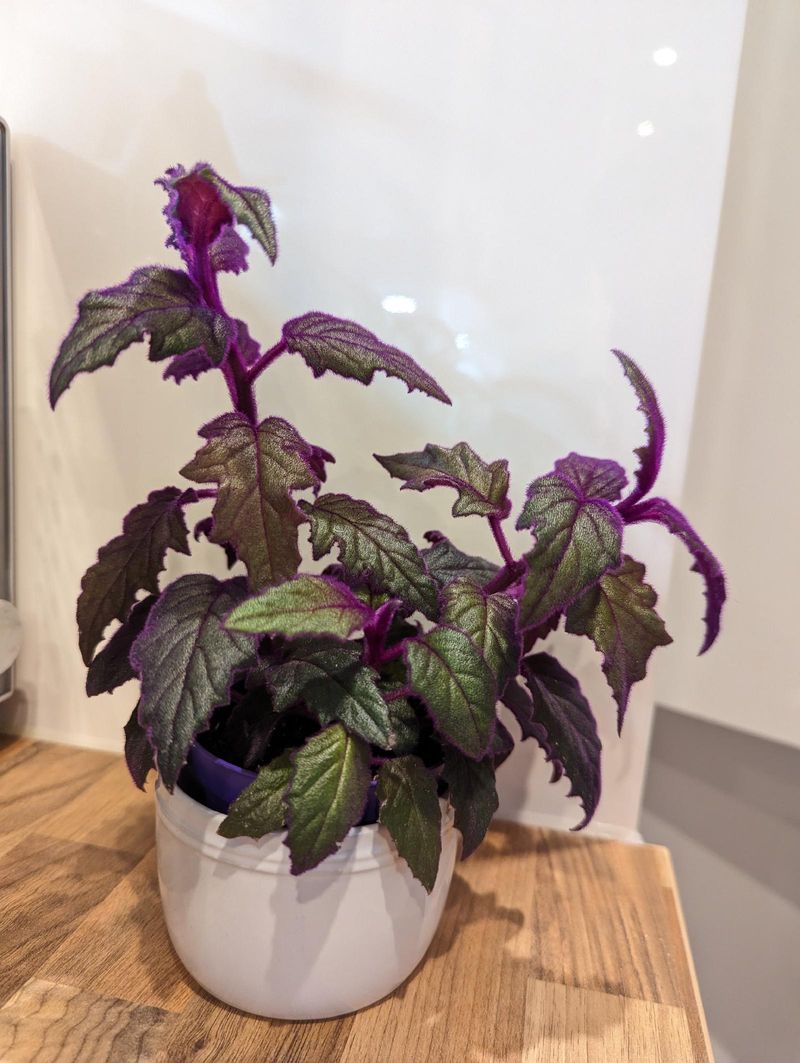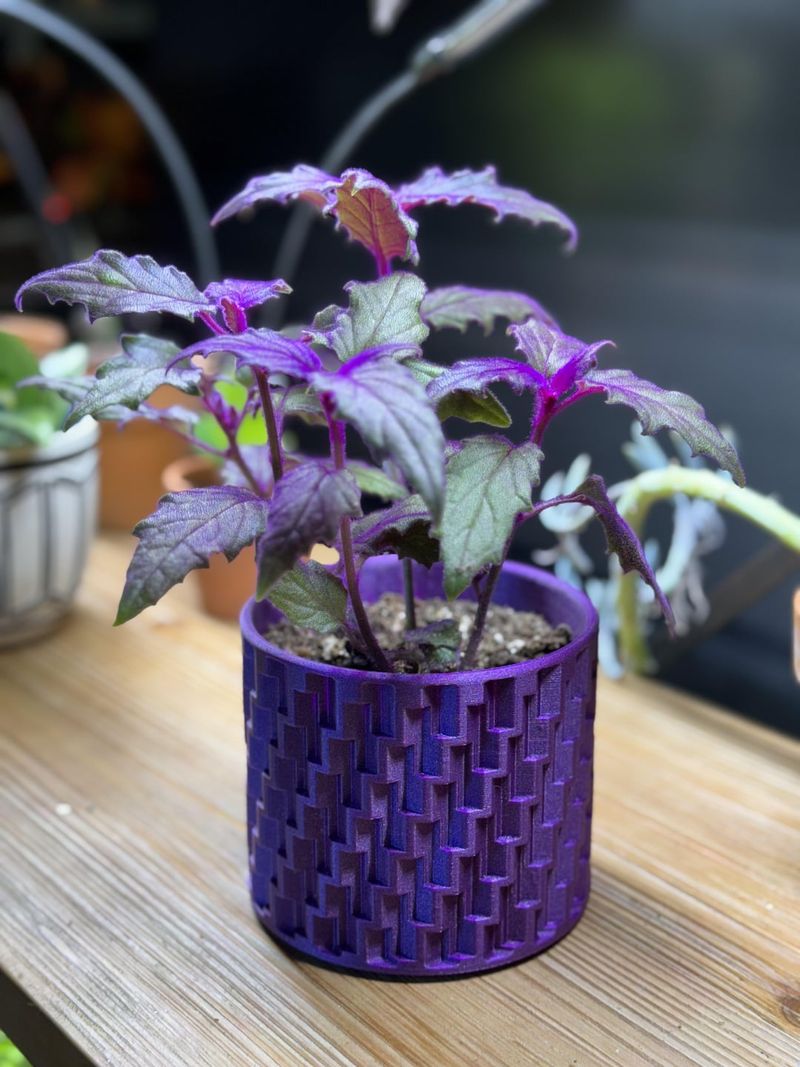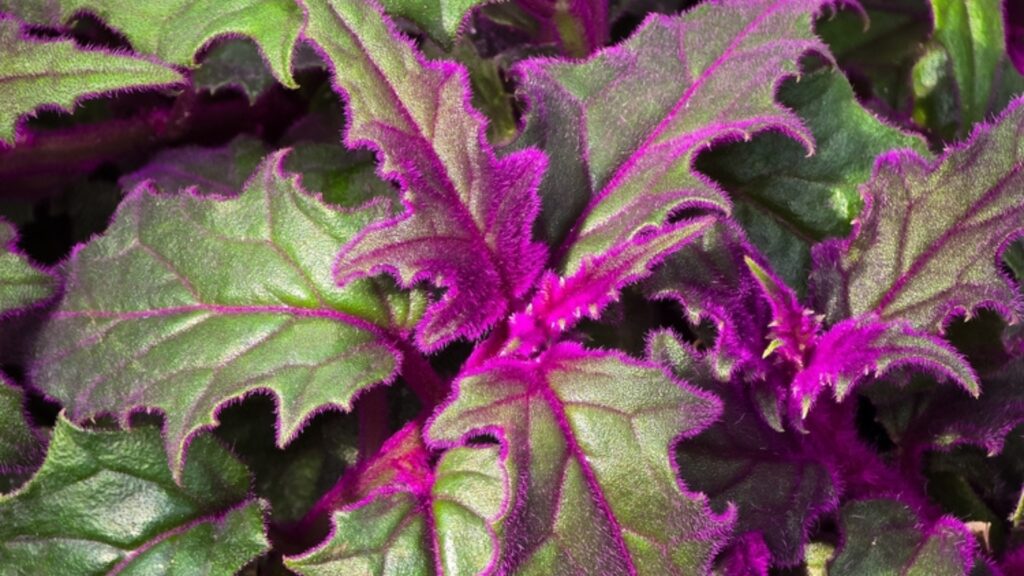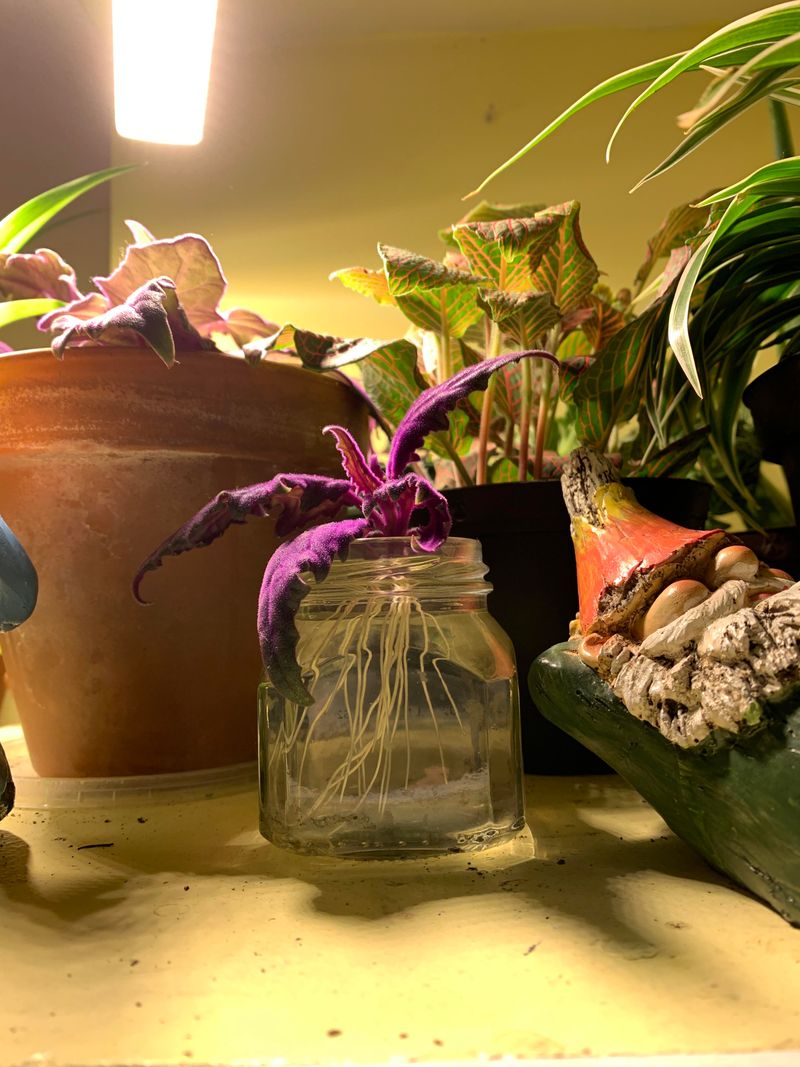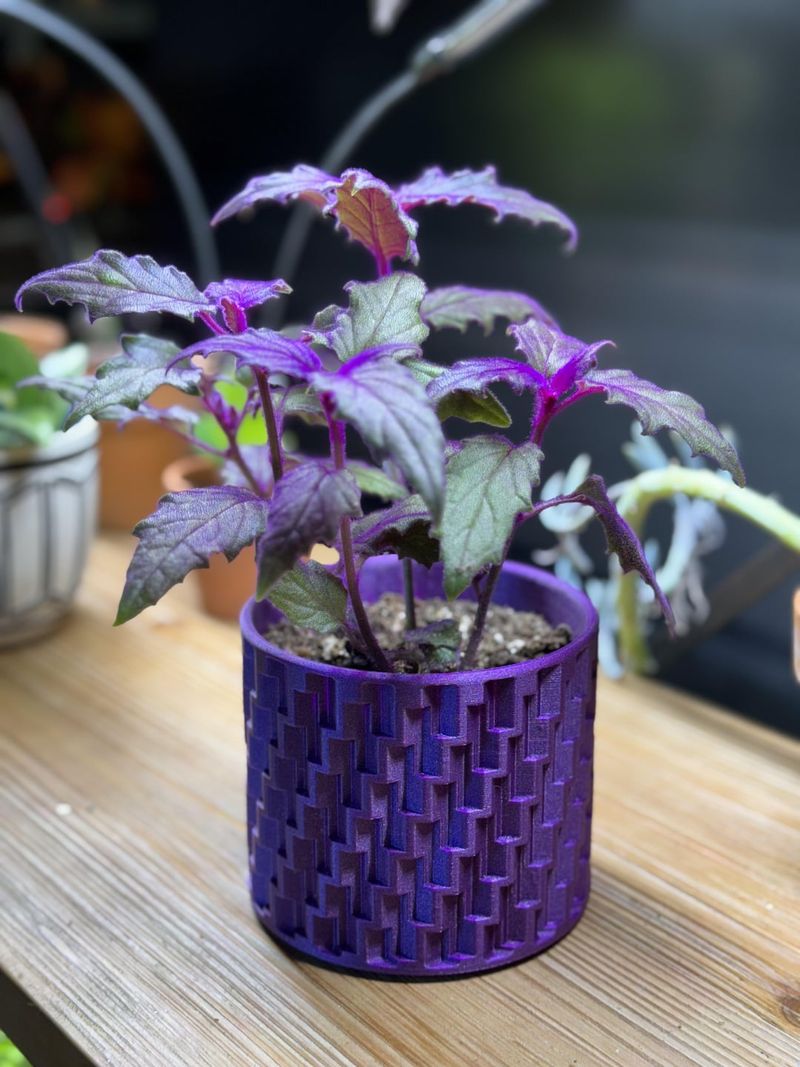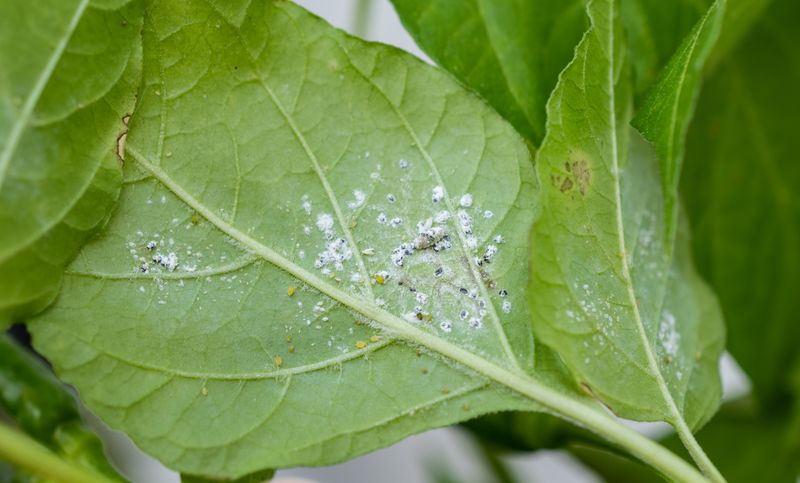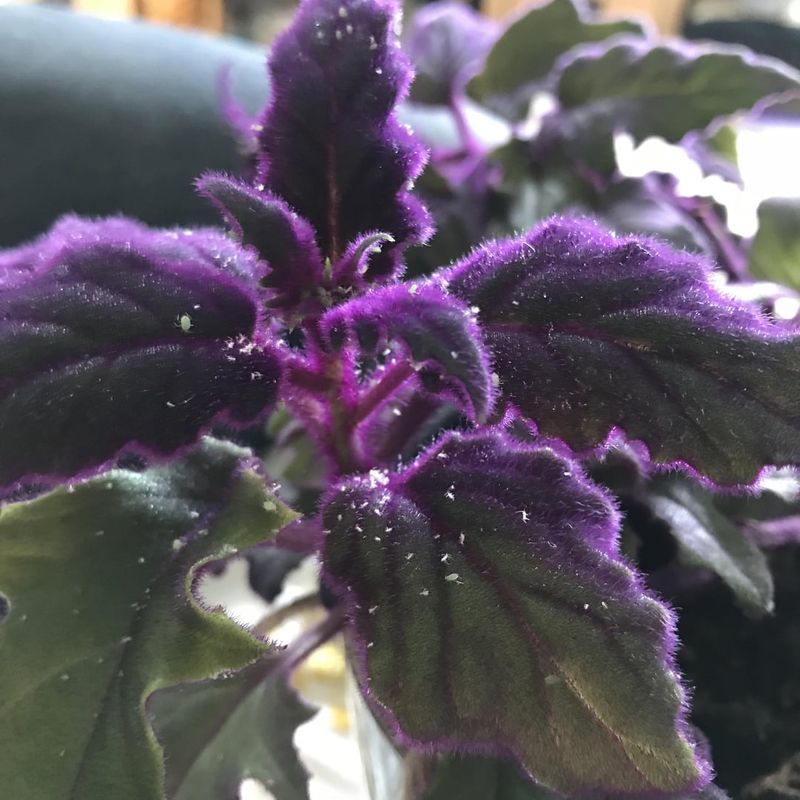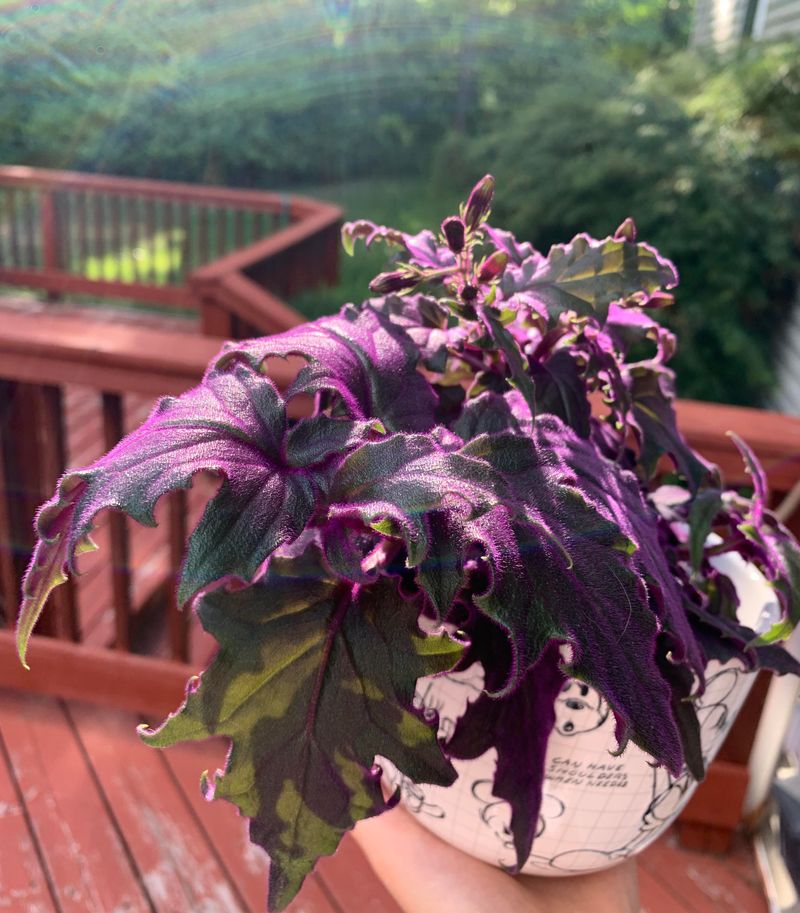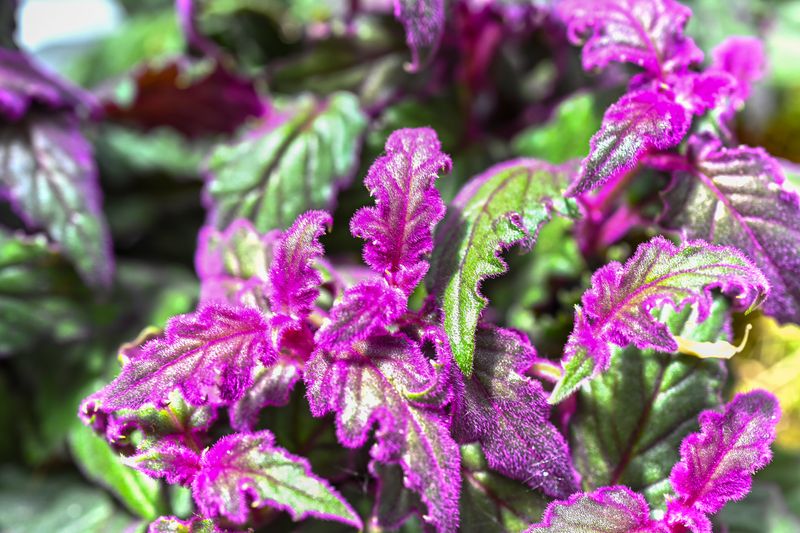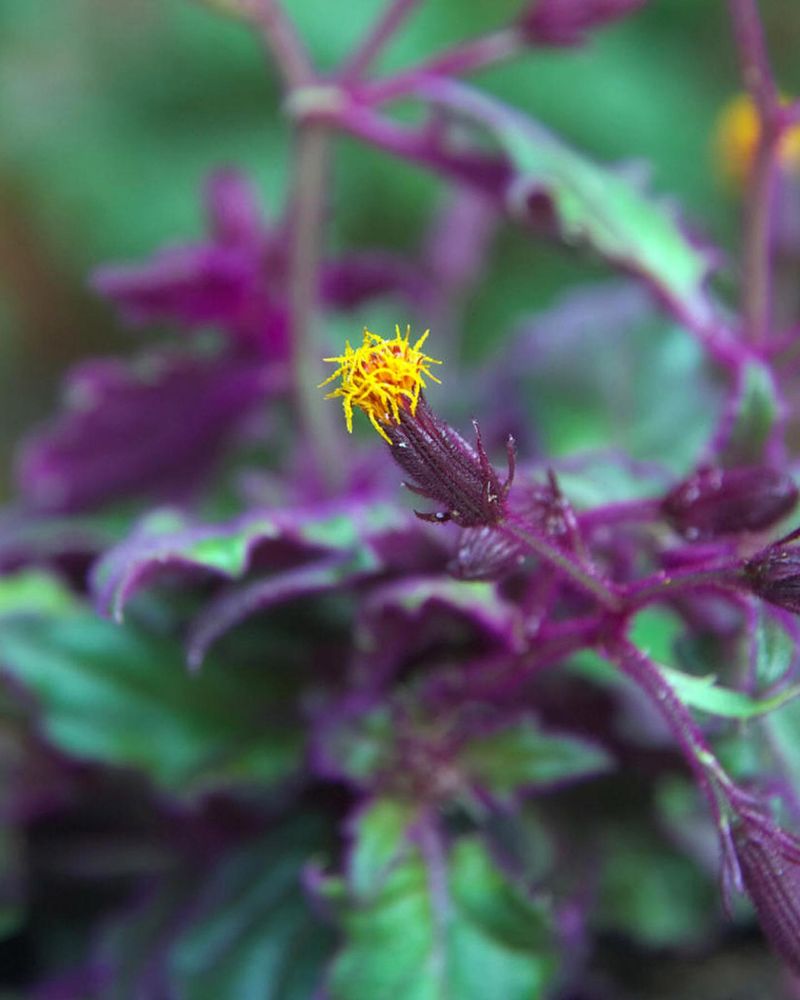Purple passion plants, with their velvety purple leaves, add a touch of magic to any indoor garden. These fuzzy-leaved beauties aren’t your average houseplant – they require specific care to truly thrive. Before bringing one home, understanding their unique needs will help you avoid common pitfalls and enjoy their stunning purple foliage for years to come.
1. Proper Lighting Makes All the Difference
Purple passion plants love bright, indirect light – think of a spot near a window with a sheer curtain. Direct sunlight can scorch those beautiful fuzzy leaves, while too little light causes the purple color to fade.
During winter months, you might need to move your plant closer to a light source. The vibrant purple color actually comes from tiny hairs on the leaves, and proper lighting helps maintain this striking feature.
2. Watering Routine Requires Balance
Finding the sweet spot for watering your purple passion plant prevents many common problems. Allow the top inch of soil to dry out between waterings, then thoroughly soak until water drains from the bottom.
Never let your plant sit in standing water – empty that saucer! During winter, reduce watering frequency as growth slows down. Overwatering leads to root rot, while underwatering causes crispy leaf edges and overall decline.
3. Humidity Levels Affect Leaf Texture
Coming from tropical regions, purple passion plants crave humidity levels higher than most homes provide. Those velvety leaves look their best when humidity stays above 50%. Low humidity causes brown edges and crispy leaves.
Create a more humid microclimate by placing your plant on a pebble tray with water. Grouping plants together also increases local humidity. Avoid placing your purple beauty near heating vents or air conditioners that dry out the air.
4. Temperature Range Matters
Purple passion plants thrive in temperatures between 65-75°F (18-24°C). They’ll show signs of stress if kept in areas below 60°F (15°C). Cold drafts from windows or doors can damage those beautiful leaves overnight.
Summer heat above 80°F (27°C) can also stress your plant. Keep an eye on leaf color – fading purple might indicate temperature issues. Moving your plant seasonally to maintain ideal temperatures helps ensure those velvety leaves stay vibrant year-round.
5. Soil Mix Should Be Well-Draining
Standard potting soil often retains too much moisture for purple passion plants. Create the perfect mix by combining regular potting soil with perlite and orchid bark for improved drainage. This combination prevents the soggy conditions that lead to root rot.
The ideal soil pH ranges between 6.0-6.5, slightly acidic. African violet potting mix works well in a pinch. Refreshing the soil annually keeps your plant happy and provides fresh nutrients for those stunning purple leaves.
6. Fertilizing Schedule Enhances Color
Feed your purple passion plant with a balanced liquid fertilizer diluted to half strength every 2-3 weeks during spring and summer. The right nutrients intensify that gorgeous purple coloration while promoting healthy growth.
During fall and winter, reduce feeding to once monthly or stop completely. Over-fertilizing causes salt buildup that damages roots and leaves. Flushing the soil with plain water every few months helps remove accumulated fertilizer salts.
7. Pruning Encourages Bushier Growth
Purple passion plants grow leggy over time, with stems becoming bare near the base. Regular pruning encourages a fuller, more attractive plant. Snip stems just above a leaf node using clean scissors or pruning shears.
Don’t toss those cuttings! They root easily in water or soil to create new plants. Pruning also removes older leaves that naturally lose their vibrant color. For the bushiest plant, pinch growing tips regularly during the active growing season.
8. Repotting Needs and Timing
Young purple passion plants grow quickly and benefit from yearly repotting. Choose a container just 1-2 inches larger than the current pot to prevent overwatering issues in too-large containers.
Spring makes the ideal repotting time when the plant enters active growth. After 2-3 years, your plant may become woody and less attractive – many gardeners start fresh with cuttings rather than maintaining older specimens. Always use fresh soil when repotting to provide new nutrients.
9. Lifespan Expectations
Purple passion plants typically live 2-3 years before becoming woody and less attractive. Understanding this short lifespan helps set realistic expectations. Many gardeners propagate new plants from cuttings as the parent plant ages.
With excellent care, some plants survive longer, but the vibrant purple color often diminishes with age. Rather than fighting nature, embrace this cycle by always having young plants in various growth stages. The most vibrant purple color appears on new growth.
10. Propagation Methods Are Simple
Creating new purple passion plants couldn’t be easier! Take 4-6 inch stem cuttings, remove lower leaves, and place in water or moist soil. Roots typically develop within 2-3 weeks in water, slightly longer in soil.
Spring and summer offer the best propagation success. Keep new cuttings in bright indirect light and higher humidity. The fuzzy texture makes these plants especially satisfying to propagate, as even beginners achieve high success rates. Share extras with friends!
11. Pet Safety Considerations
Purple passion plants contain compounds that are mildly toxic to cats, dogs, and other pets. Ingestion typically causes mouth irritation, drooling, or mild stomach upset. Keep plants on high shelves or in hanging baskets away from curious pets.
The fuzzy leaves rarely attract pets for chewing, but it’s better to be safe. If you notice your pet has eaten part of your plant, contact your veterinarian. For households with pets that chew plants regularly, consider pet-safe alternatives like spider plants or calatheas.
12. Common Pests to Watch For
The fuzzy texture of purple passion leaves attracts spider mites, mealybugs, and aphids. Check under leaves regularly for webbing, cotton-like clusters, or tiny moving dots. Early detection prevents major infestations.
Treat pest problems with insecticidal soap or neem oil, applied weekly until resolved. The textured leaves make pests harder to spot, so use a magnifying glass during inspections. Preventative measures include regular leaf cleaning with a soft brush and maintaining proper humidity.
13. Leaf Color Changes and Causes
The signature purple color fades when light levels are too low or the plant ages. Increasing light (without direct sun) intensifies purple pigmentation. New growth always shows the most vibrant color.
Yellow leaves typically indicate overwatering or poor drainage. Brown leaf edges suggest low humidity or fertilizer burn. Green patches replacing purple areas often mean insufficient light. Understanding these color signals helps you adjust care quickly before problems worsen.
14. Decorative Display Options
Purple passion plants look stunning in hanging baskets where trailing stems cascade downward. The contrast between purple foliage and bright containers creates eye-catching displays. For tabletop growing, choose shallow, wide pots that accommodate spreading growth.
These plants pair beautifully with silver, white, or lime green companions. Their fuzzy texture adds interesting contrast to smooth-leaved houseplants. Consider macramé hangers or elevated plant stands to showcase the trailing habit while keeping pets at a safe distance.
15. Scientific Name and Origins
Officially named Gynura aurantiaca, the purple passion plant belongs to the Asteraceae family. Native to Indonesia, particularly Java, it grows naturally in tropical forests with filtered light and high humidity.
Despite the purple appearance, the plant produces bright orange flowers that many growers remove due to their unpleasant scent. The plant earned its common name from the passionate purple color rather than any romantic properties. Some gardeners call it the “velvet plant” due to its touchable texture.
16. Winter Care Adjustments
During winter months, purple passion plants require several care changes. Reduce watering frequency but maintain humidity with pebble trays or humidifiers. Move plants closer to windows but protect from cold drafts.
Avoid fertilizing during winter dormancy period. Supplemental grow lights help maintain vibrant color during shorter days. Keep plants away from heating vents that dry out leaves. With proper winter adjustments, your purple passion plant will survive the challenging season and resume vigorous growth come spring.

